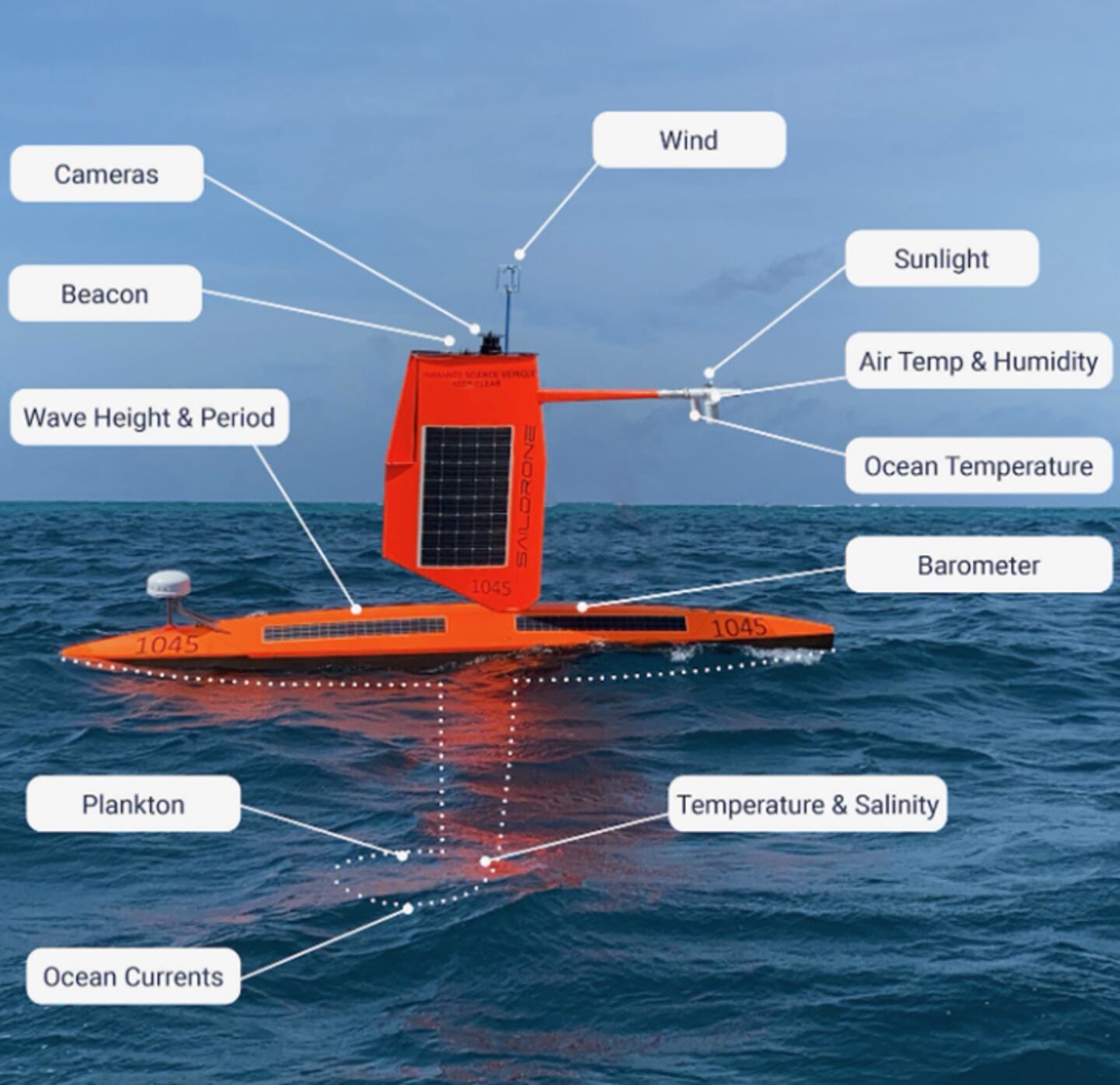A team of UW scientists navigated an unmanned ship into the heart of Hurricane Milton.
The UW researchers were able to sail their ship into the center of Hurricane Milton, capturing the terrifying open waters – right from here in Seattle.
KIRO 7 spoke with Andy Chiodi, senior research scientist at the University of Washington and the National Oceanic and Atmospheric Administration, one of the members who helped design the uncrewed vessel.
There are 12 orange carbon fiber vessels – 23 feet in length and more than 11 feet high – floating in the Gulf of Mexico and the Atlantic Ocean, he shared.
The boats – powered by solar panels and eolic energy – can sustain themselves for about a year, Chiodi told KIRO 7.
The boats were launched in July to measure and record key data of hurricanes, including wind speed and direction, humidity, solar radiation, wave heights, surface temperature of the ocean, ocean currents, etc.
One vessel got near the eye of the storm, about 60 nautical miles from Fort Meyers, Florida.
“We can put more sensors on them than we can put on buoys. We can navigate them into the storms, which we cannot do with buoys. So they have a lot of advantages,” said Chiodi.
The data recorded was sent back to forecast centers where The National Weather Service was able to use the real-time data to make more accurate forecasts about the storm, informing families in Florida of what to expect and when to evacuate.
The vessels were able to capture footage of massive waves measuring as high as 30 feet.
“Getting these vehicles, which we can send into the hurricane without risking human life, to collect the measurements we need both to improve to the best we can the forecast models, the information being provided to the forecasters and our understanding of the processes that control the heat transfer, especially from the ocean to the atmosphere,” he said.
One of the vessels is currently gathering information on Hurricane Leslie, which is in the Atlantic Ocean as of Thursday.
The vessels are almost impossible to sink, Chiodi said.
“I don’t think you can sink one. They have enough buoyancy in the haul that it would be awfully hard to sink one of these to the bottom,” he shared.
Two of the vessels currently have damaged sensors caused by the ocean’s waves. However, the vessels are built to withstand some of the strongest storms recorded, including Hurricane Sam.
“2021, Hurricane Sam was Category 4. One of the longer stronger storms we’ve seen in the Atlantic. The maximum sustained wind speeds we measured was 90 mph and that was the first major hurricane we sent these vehicles into,” Chiodi shared.
The vessels will continue to float around in the Gulf of Mexico and the Atlantic Ocean throughout November, he added.
©2024 Cox Media Group






